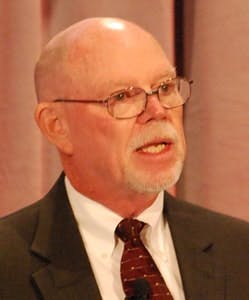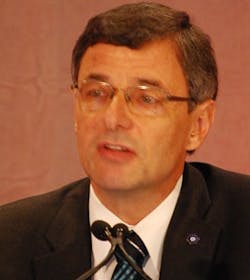Michael Miller of Rockwell Automation, who in this venue spoke in his role as vice-chairman of the U.S. National Committee TAG TC-199, explained what that those acronyms stand for. "The USNC is a mirror committee to ISO/TC 199 Machine Safety. ISO and IEC are international organizations comprised of national standards bodies such as ANSI, ISA, BSI," Miller explained. "They each have technical advisory groups or TAGs, made up of technical experts in their nations, and form working groups that focus on various elements of machine safety."
These groups work both individually and collectively to write global standards. The U.S. TAG is administered by ANSI. At present, there are roughly 26 active participating countries and 23 observer countries.
Global Markets, Global Standards
Miller said the scope of TC-199 (Technical Committee 199) fundamentally is concerned with machine safety. "Gone are the days when we write individual, national standards," he explained. "Look at the global economy we live in. We want to build a machine one way and sell it all over the world because that's where the market is."
Miller mentioned a more recent joint working group, JWG1, with members of an ISO TC group and an IEC TC, aiming at a merger of the ISO 13849 and IEC 62061. He added that TC-199 has revised or added 42 standards during the past 18 months. As the state of the art changes, technology changes, and the committees and working groups are charged with seeing that the standards remain relevant. "We have allow present technology to be used, but often have to try to anticipate where technology will take us and not put limits around that technology's use," Miller said.
"Gone are the days when we write individual, national standards." Rockwell Automation's Michael Miller on the state of international cooperation and collaboration on safety standards.
Miller added that around the world most standards are voluntary, but more are being adopted by regulatory bodies and becoming law, as the case with OSHA and with the Machinery Directive in Europe. "You certainly can build a machine without standards," Miller stated. "You'll have a very difficult time demonstrating that it meets the health, safety and environmental requirements that are spelled out in the standards as practical interpretations of how to build a safe machine."Miller offered an invitation for participation in national TAGs and TCs to the audience and industry overall. "Participation is always voluntary, and we're always looking for good, qualified people to help us by passing along the knowledge you've acquired through the years to future generations. It's a very difficult job, but very rewarding. Support your TAGs and TCs whenever and wherever you can."
The View from Europe
Dietmar Reinert, deputy director at IFA, said that standards matter in Europe because of legislative issues. Before the harmonized EU standards, there were 27 countries with differing standards, particularly for goods imported from one to another. "Now for the machine builder, no EU country can have higher requirements," he said. "The free movement of goods in the EU is protected by the Machinery Directives, which prescribe maximum protections. If you follow harmonized EU standards, then you fulfill the requirements of the Machinery Directive."
"The new slogan is 'human-integrated manufacturing.'" IFA's Dietmar Reinart on the effort to integrate safety considerations into machine design processes.
So how does IFA work? "We have safety inspectors in the field to investigate accidents, but sometimes manufacturers come to us because there is no standard to fit their particular needs. They ask us to review it and accept it. Since we are a Notified Body, we can eventually certify that the solution is safe."For a first design, IFA creates a test specification and test procedure. "We discuss the testing concept with other Notified Bodies in Europe, and if all is in order, an EC type examination [certificate] is given to the manufacturer, and the new product then can be sold in the European market."
Reinert provided several examples of the work done at IFA to certify new safety products for the EU market. One of the more novel is work that developed a near-infrared spectral signature of human skin for a new type of safety light curtain, which can discriminate skin from all other materials and objects, such as glass work gloves or materials that conventional light curtains can't distinguish. Here again, the goal will be to create a harmonized standard for this technology.
Reinert concluded with a few thoughts about IFA's view of the continuing evolution of safety standards. "The more we integrate safety into the process, the more it will be accepted by the user," he stated. "Integration means to integrate safety technology into the production process with safe protection devices and safe control systems. As a consequence, safety technology becomes more complex within the design and by using it, so investigations for usability will become more and more important. It's clear that the user has to be integrated into the design process of machinery. So, the new slogan is 'human-integrated manufacturing.'"
In terms of the emphasis the United States puts on global standards, Miller reluctantly admitted that the country is a little behind in making national standards global, in some measure because we have many standards organizations. "We're still learning how to play in the big sandbox," he said. "We're still writing a lot of national standards. There are a lot of reasons for that, but one of them has to do with our legal system and the differences in the liability of users and machine builders here compared to Europe."
About the Author
Joe Feeley
Joe Feeley

Leaders relevant to this article:










